5901 Botham Jean Blvd, Dallas, TX 75215
Electrorefining of Recycled Metals: Process, Advantages, Challenges, and Future Innovations
September 29, 2025Electrorefining is a fundamental technology in modern metal recycling. This electrochemical process purifies metals from recycled sources through a controlled reaction that separates valuable materials from impurities. In our resource-limited world, this technique is crucial for recovering high-quality metals from secondary sources.
The process operates through an electrolytic cell where electrical current drives metal ions between electrodes. The impure recycled metal serves as the anode (positive electrode), dissolving into a solution.
Pure metal then deposits onto the cathode (negative electrode). This selective transfer produces metal products with purities reaching 99.99% while concentrating valuable impurities like gold, silver, and selenium for separate recovery.
How Does the Electrorefining Process Work for Recycled Metals?
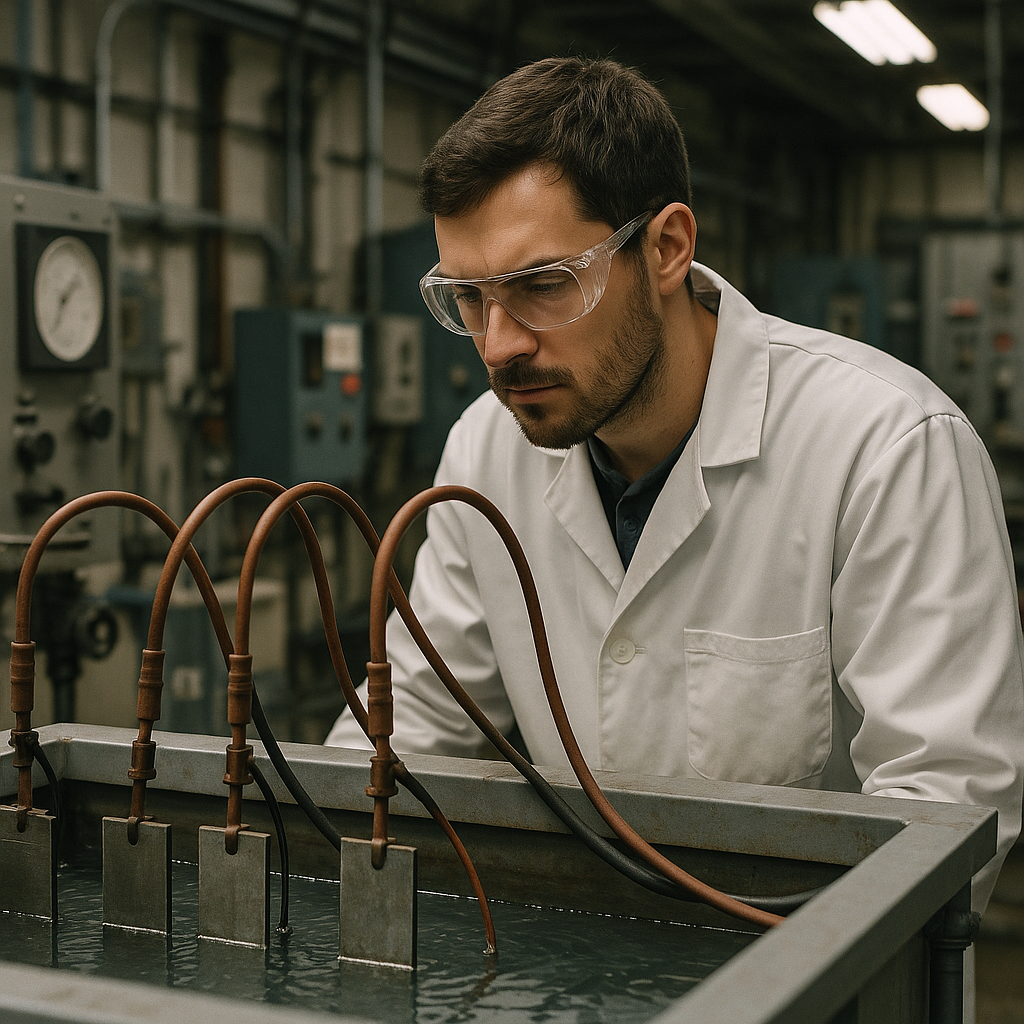
The electrorefining process is a sophisticated electrochemical technique that purifies metals through controlled dissolution and deposition. At its core, this process occurs in an electrolytic cell where impure recycled metal is transformed into high-purity metal through an electrical current.
The Electrolytic Cell Setup
The foundation of electrorefining is the electrolytic cell. This setup consists of two electrodes immersed in an electrolyte solution. The impure recycled metal serves as the anode, while the cathode is typically made of either a starter sheet of the same metal or a permanent cathode made of an inert material.
The electrolyte solution contains dissolved metal ions and varies based on the metal being refined. For copper electrorefining, a solution of copper sulfate and sulfuric acid is commonly used. This solution must conduct electricity efficiently while supporting the electrochemical reactions.
Anode Dissolution Process
When electrical current flows through the cell, oxidation occurs at the anode. The impure recycled metal dissolves, releasing metal ions into the electrolyte solution. This process can be expressed as: M → Mn+ + ne–, where M represents the metal being refined.
The dissolution rate depends on several factors, including current density, temperature, and electrolyte composition. As the anode dissolves, impurities either go into solution or form what’s known as anode slimes that collect at the bottom of the cell.
Ion Migration and Cathode Deposition
Once dissolved in the electrolyte, metal ions migrate toward the negatively charged cathode. At the cathode surface, these ions receive electrons and are reduced to their metallic form through the reaction: Mn+ + ne– → M.
This deposition process is selective. The applied voltage is carefully controlled to ensure only the desired metal deposits on the cathode. Less noble metals typically remain in solution, while more noble metals often collect in the anode slimes.
Impurity Separation Mechanisms
The beauty of electrorefining lies in its ability to separate the desired metal from impurities. This separation occurs through three main mechanisms:
- Selective dissolution: Some impurities don’t dissolve at the anode and fall to form anode slimes.
- Selective deposition: The controlled voltage ensures only the target metal deposits at the cathode.
- Solution retention: Some impurities dissolve but don’t deposit, remaining in the electrolyte.
This separation ability makes electrorefining particularly valuable for recycling. Precious metals like gold, silver, and platinum often concentrate in anode slimes, creating additional value streams from the recycling process.
Process Control and Efficiency
Modern electrorefining operations maintain strict control over multiple parameters. Current density, temperature, electrolyte composition, and electrode spacing all affect efficiency and product quality. Advanced monitoring systems track cell voltage and detect issues like short circuits that could compromise product purity.
The efficiency of electrorefining is remarkable. In copper refining, which represents over 80% of electrorefining operations worldwide, the process regularly achieves purity levels exceeding 99.9%, making it essential for producing electrical-grade metals.
Through this carefully controlled process, recycled metals can be transformed from impure scrap into high-value refined metals ready for reuse in demanding applications.
What Are the Key Advantages of Electrorefining Recycled Metals?
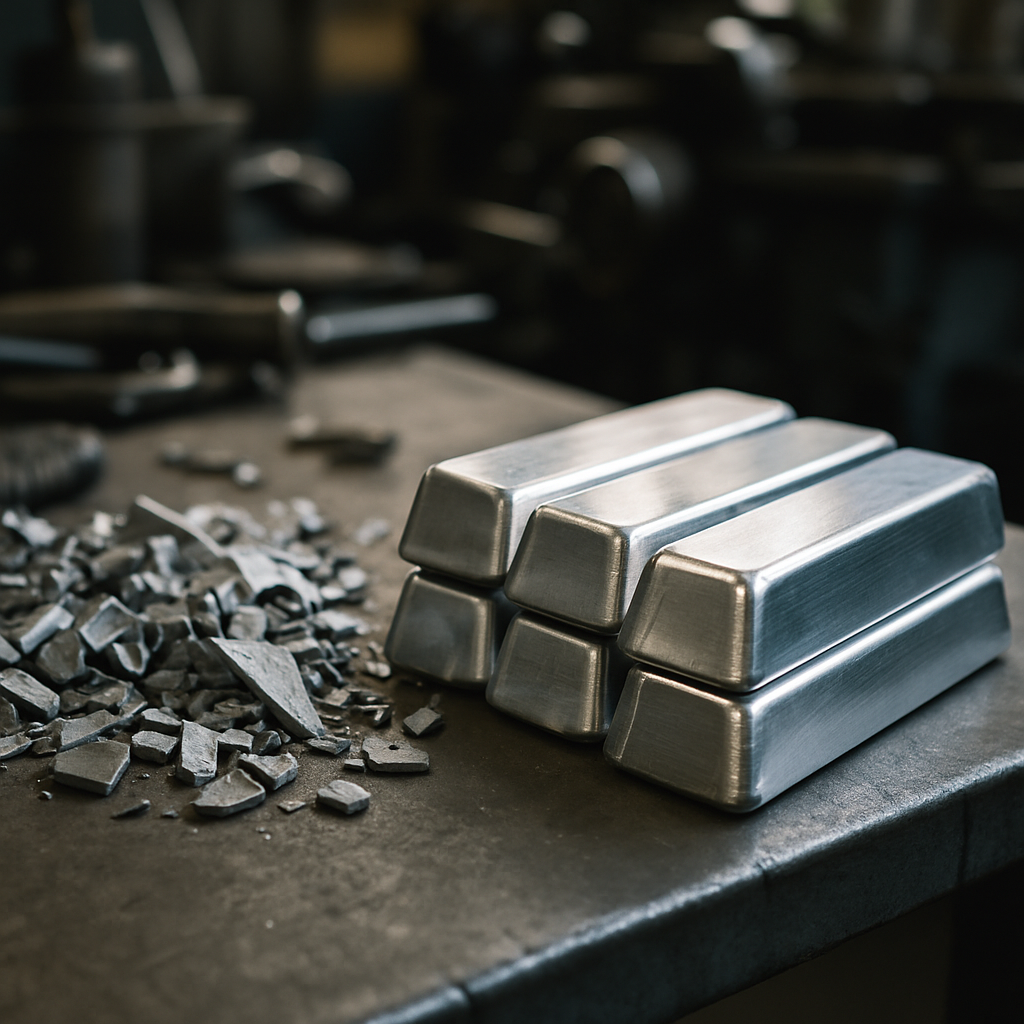
Electrorefining is a pivotal technology in modern metal recycling. This electrochemical process offers significant benefits for processing recycled metals, enhancing both operational efficiency and environmental sustainability.
- Superior Metal Separation Selectivity – Electrorefining excels at isolating specific metals from complex mixtures, selectively extracting valuable metals like gold and platinum from others such as silver, nickel, and copper. This high selectivity leads to cleaner separation and higher value recovery.
- Significant Energy Efficiency – The energy demands for electrorefining recycled metals are substantially lower than those required for primary metal extraction from raw ores, resulting in reduced operational costs and a smaller carbon footprint per ton of metal processed.
- Minimal Environmental Impact – Unlike traditional smelting processes, which produce significant air pollutants, electrorefining generates minimal harmful emissions and requires less water, important for regions with limited water resources.
- Exceptional Recovery Rates – Electrorefining can achieve recovery rates up to 99% for many metals, ensuring valuable materials are not lost during processing and maximizing the economic value of recycled metals.
- Electrolyte Regeneration Capability – During copper electrolysis, acid is regenerated and can be recycled back into the process, reducing overall acid consumption and waste, creating a more closed-loop system.
The versatility of electrorefining is particularly valuable for recycling operations. The process accommodates varying input material quality while consistently producing high-purity outputs, crucial for processing diverse waste streams with fluctuating compositions.
Modern electrorefining facilities operate continuously, processing anywhere from 1,000 to 100,000 tons annually. These operations are integrated into larger metallurgical complexes for comprehensive metal recovery. Through careful process control, these facilities effectively concentrate metals for further processing, making electrorefining a crucial step in metal recycling.
As sustainability demands increase, electrorefining technology continues to evolve with advances in cell design, monitoring systems, and process optimization, focusing on reducing energy consumption, minimizing waste, and expanding applications into new metal recycling streams.
What Challenges Exist in Electrorefining Recycled Metals?
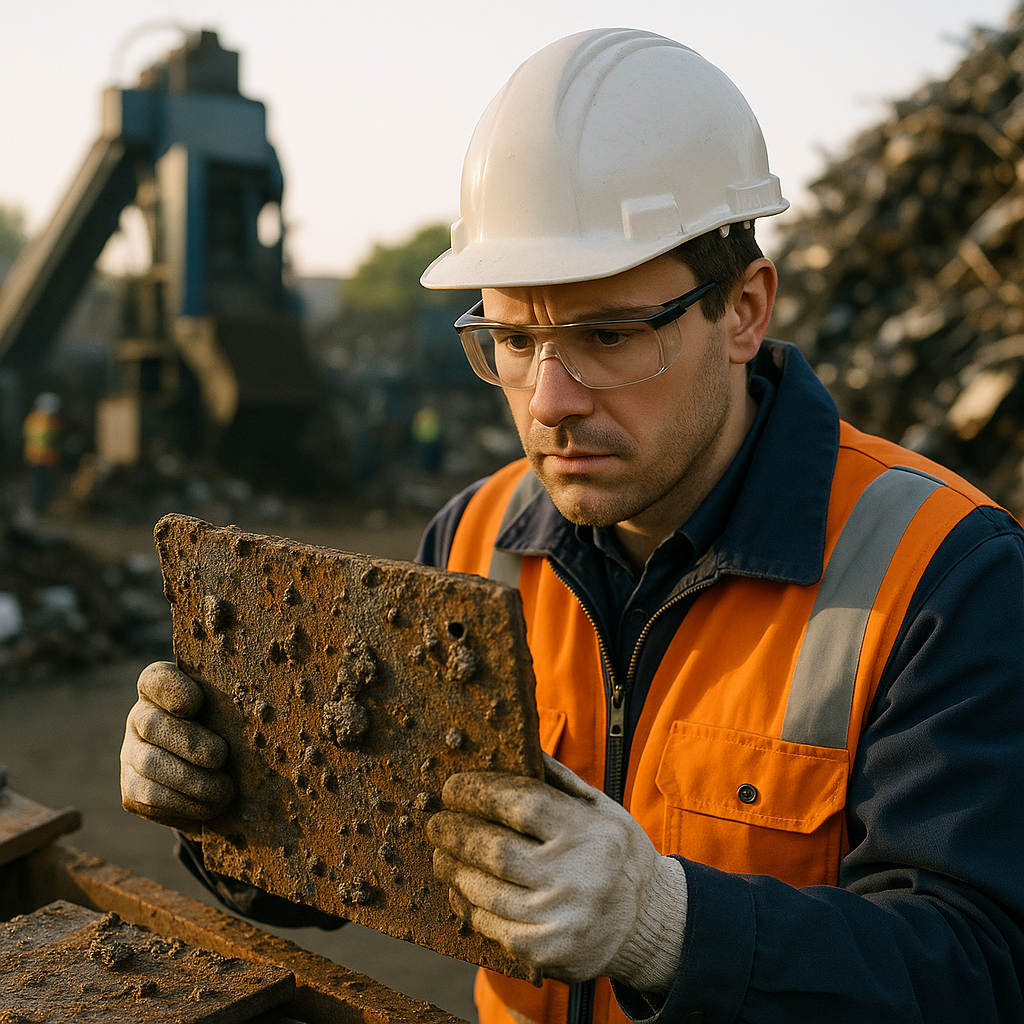
Electrorefining plays a crucial role in recycling metals from electronic waste. However, several technical challenges hinder its efficiency and widespread adoption. Understanding these obstacles is essential for developing more sustainable metal recovery systems.
Multi-Element Complexity
The heterogeneous nature of recycled materials presents a fundamental challenge. E-waste contains diverse metals with varying electrochemical properties, complicating the refining process. When multiple metal ions are present in leachate solutions, selective recovery becomes difficult due to similar reduction potentials.
This complexity often leads to the co-deposition of unwanted metals, reducing final product purity. For instance, in the copper electrorefining of printed circuit boards, contaminants like nickel can significantly impact the quality of cathode deposits. Researchers have documented mechanisms of nickel contamination at various stages of the electrorefining cycle.
Corrosive Electrolytes and Safety Concerns
Many electrorefining processes rely on highly acidic or alkaline electrolytes. These solutions, while effective for metal dissolution, pose serious safety and environmental hazards. Electrolytes containing cyanide compounds, often used for precious metal recovery, create substantial environmental burdens and health risks.
The corrosive nature of these solutions also accelerates equipment deterioration, increasing maintenance costs and operational downtime. This corrosion challenge extends to electrical connections and monitoring equipment, potentially compromising process control.
Membrane Fouling and Cell Design Issues
Membrane-based separation systems frequently suffer from fouling problems. In silver electrorefining, for example, the anode compartment must be isolated from the cathode compartment by a membrane or porous bag to prevent contamination of silver crystals with anode slime. This membrane can become clogged with insoluble materials released at the anode.
Production of gold-bearing slime in the anode compartment can cause passivation of silver anodes, requiring periodic removal and creating materials-handling challenges. These issues necessitate regular maintenance and cleaning, increasing operational complexity.
Energy Consumption and Efficiency
High energy requirements represent a significant drawback of electrorefining processes. The electrical potential needed varies significantly between metals, with some requiring considerably more energy than others. For example, the energy consumption for copper electrowinning can reach approximately 2000 kWh/t, substantially higher than electrorefining at 200-300 kWh/t.
The energy efficiency is further reduced when working with dilute metal solutions, as commonly encountered in recycling operations. Low metal concentrations lead to poor current efficiency and increased side reactions, particularly in highly acidic environments.
Scalability and Economic Viability
Transitioning from laboratory success to industrial implementation presents substantial challenges. The capital investment required for electrorefining facilities can be considerable, though still lower than pyrometallurgical alternatives. According to industry analyses, a minimum viable electrochemical recovery operation requires approximately 20 kt/year throughput with a capital investment around $6.8 million.
The economic viability of electrorefining recycled metals depends heavily on metal prices, energy costs, and the concentration of valuable metals in the feed material. For rare earth elements present in minimal quantities in e-waste, recovery costs often exceed market value despite their strategic importance.
Process Control and Parameter Optimization
Maintaining optimal operating conditions throughout the electrorefining cycle requires sophisticated monitoring and control systems. Factors such as current density, electrode spacing, electrolyte composition, temperature, and pH must be precisely managed to achieve high recovery rates and product purity.
Short circuits between electrodes due to non-vertical electrode placement, bent cathodes, or nodular growths can waste electrical current and lead to impure metal deposits. Regular inspection and correction of these issues add operational complexity and labor costs.
Despite these challenges, continued research and technological advancements improve electrorefining processes for recycled metals. Innovations in cell design, electrolyte formulation, and process control systems offer promising pathways to overcome existing limitations and enhance the sustainability of metal recovery operations.
How is Electrorefining Advancing Recycling of Critical Metals?
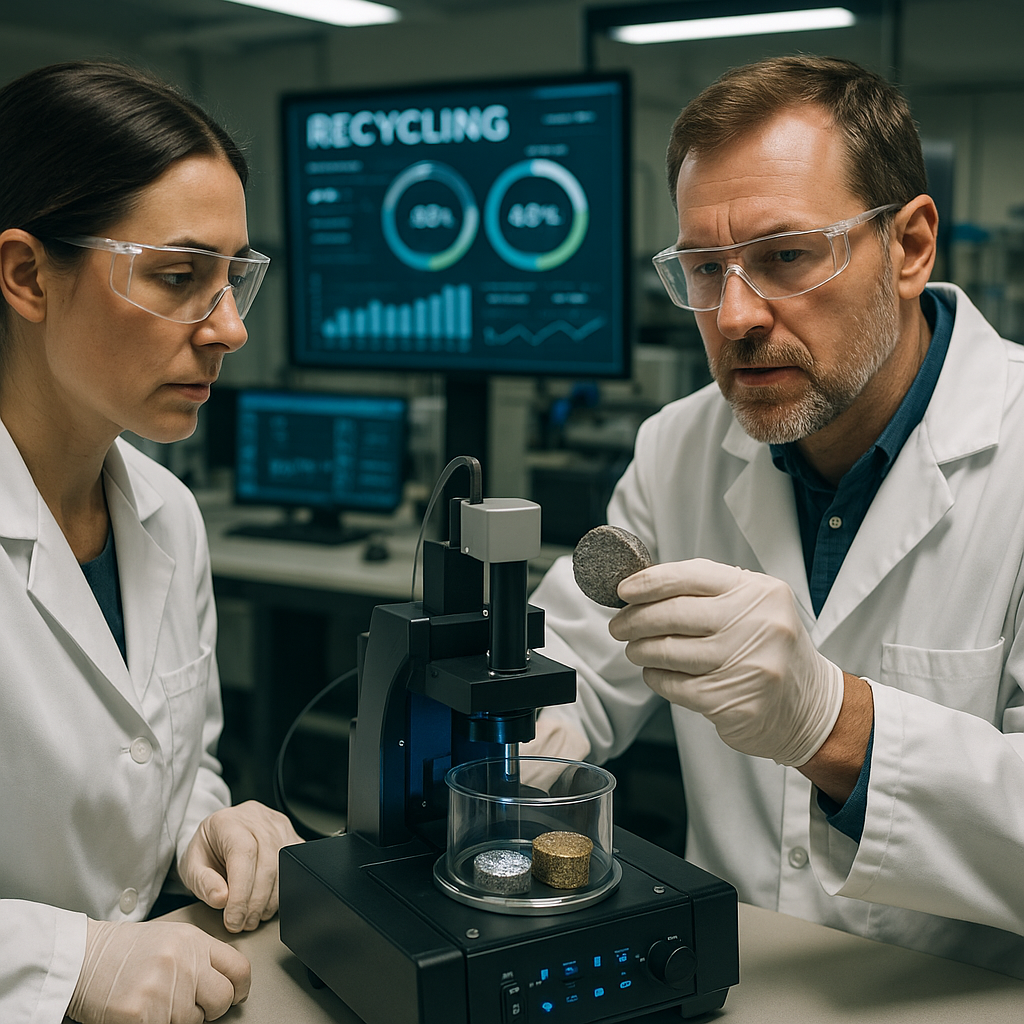
Recent advancements in electrode materials have significantly improved the efficiency of electrorefining processes. Researchers have developed specialized carbon-based electrodes that enhance the selective recovery of metals like cobalt and nickel. These electrodes provide greater surface area for reactions while minimizing unwanted side reactions that can reduce efficiency. Some cutting-edge facilities now use titanium electrodes with specialized coatings that dramatically increase durability and selectivity when processing battery waste.
Membrane technologies represent another frontier in electrorefining innovation. Advanced anion and cation exchange membranes have enabled more precise separation of metal ions during the electrochemical process. These membranes act as selective barriers, allowing only specific ions to pass through based on their charge and size. For instance, bipolar membranes are now employed to separate protons from hydroxyl ions, creating distinct pH environments that optimize metal recovery conditions while minimizing chemical waste.
Cell design innovations have transformed the electrorefining landscape. Traditional cells faced limitations in processing capacity and energy efficiency. Modern electrorefining cells incorporate optimized geometries that improve current distribution and enhance mass transfer. Some systems now feature rotating electrodes that increase reaction rates by up to 40% compared to static designs. These advancements allow for faster processing times and higher throughput, making electrorefining more economically viable on a commercial scale.
The impact of these improvements is particularly evident in the recovery of lithium, a critical metal with limited natural reserves. Conventional recycling methods often fail to recover lithium cost-effectively, but electrorefining has changed this equation. Specialized electrochemical systems now allow facilities to extract over 95% of the lithium from battery waste. This breakthrough is significant given the projected shortage of lithium as the adoption of electric vehicles accelerates worldwide.
Cobalt recovery has also benefited substantially from electrorefining advancements. As one of the most expensive components in lithium-ion batteries, cobalt recovery presents both economic and ethical imperatives. Electrorefining processes can now separate cobalt with purities exceeding 99.5%, making the recovered material suitable for direct reuse in new battery manufacturing. This high-purity recovery eliminates multiple processing steps required in traditional recycling methods.
Nickel extraction represents another success story in electrorefining technology. Recent developments have enabled selective recovery of nickel from complex mixed-metal solutions. The process works by controlling electrode potential to target nickel deposition while leaving other metals in solution. Some advanced systems can now recover nickel from battery waste with energy requirements 60% lower than primary mining operations, highlighting the sustainability benefits of this approach.
The circular economy benefits of electrorefining extend beyond just metal recovery. The process consumes significantly less energy than pyrometallurgical methods, which typically require temperatures above 1400°C. Electrorefining operates at near-ambient temperatures, reducing carbon emissions associated with metal recovery. Additionally, many systems now incorporate regenerative features that recycle the electrolyte solution, minimizing waste generation and reducing water consumption by up to 80% compared to conventional hydrometallurgical processes.
Conclusion: The Future of Electrorefining in Metal Recycling
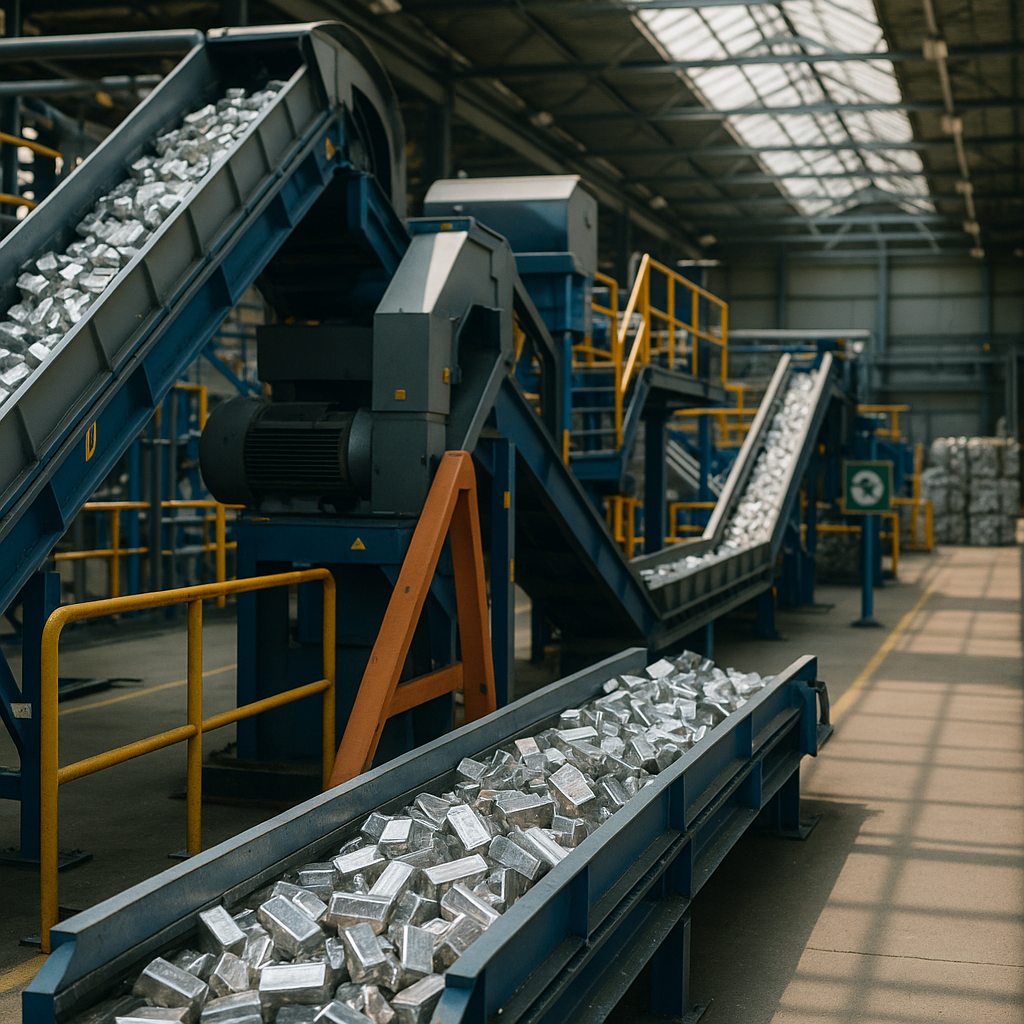
Electrorefining remains a cornerstone technology in the metal recycling industry. Its ability to produce high-purity metals from varied recycled feedstocks makes it an essential process in our increasingly resource-conscious world. The technology separates and purifies metals with a precision that few other processes can match, creating valuable materials from what might otherwise be considered waste.
As global demand for critical metals continues to rise and sustainability concerns grow more pressing, electrorefining is likely to play an even more significant role in the circular economy. Future developments in this field will focus on improving energy efficiency, reducing environmental footprints, and optimizing processes for increasingly complex recycled materials. These innovations will be crucial as industries work to meet ambitious recycling targets and reduce reliance on primary metal extraction.
For your metal recycling needs, contact Okon Recycling at 214-717-4083. Our team can help you navigate the evolving landscape of metal recycling technologies and find the most sustainable and efficient solutions for your materials.
